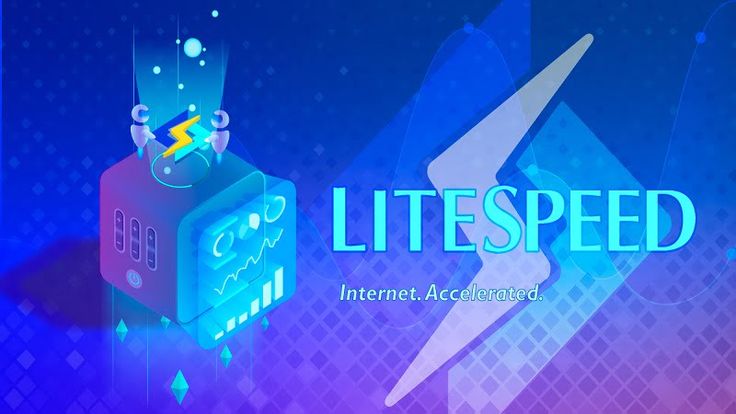“Speed is the currency of the web.” – And LiteSpeed is the mint where it’s made.

If you’ve been in the web hosting world for even a minute, you’ve likely heard the name “LiteSpeed” thrown around. But what exactly is LiteSpeed Web Server (LSWS)? Is it just another Apache alternative, or is there more to the story?
Let’s peel back the curtain and see why LiteSpeed Web Server is being hailed as one of the most significant evolutions in web hosting and what it means for your website performance, security, and scalability.
What Is LiteSpeed Web Server?
LiteSpeed is a high-performance, drop-in replacement for Apache, meaning it can run on the same configurations, .htaccess files, and PHP setups you already have.
Developed by LiteSpeed Technologies, it’s built to handle concurrent connections more efficiently, serve static content faster, and supercharge dynamic content (like PHP) in ways Apache and even NGINX struggle to match.
Key Features That Make LiteSpeed Stand Out
1. Blazing Speed and Low Resource Use
LiteSpeed’s architecture is designed to maximize throughput while using far fewer server resources.
- Handles 1000s of concurrent connections with minimal CPU and RAM
- Asynchronous event-driven design (unlike Apache’s process/thread model)
- Built-in cache layer (LSCache) that eliminates the need for third-party plugins
2. Top-Tier Security
- Built-in anti-DDoS features for HTTP, HTTPS, and even WordPress login pages
- Compatible with ModSecurity rules, plus LSAPI-specific improvements
- Cloudflare-friendly and integrates with reCAPTCHA and WAFs
3. Seamless Compatibility with Apache
- Supports .htaccess, mod_rewrite, and Apache-style virtual hosts
- Ideal for cPanel servers, no need to reconfigure existing apps
- Makes migrations frictionless
4. LSCache Plugin Ecosystem
LSCache isn’t just a cache; it’s a website accelerator that integrates natively with:
- WordPress
- Joomla
- Magento
- OpenCart
- Drupal
LSCache plugins allow for page caching, ESI (Edge Side Includes), object caching, and CDN support with ZERO config for beginners.
5. QUIC + HTTP/3 Support
LiteSpeed Web Server was one of the first mainstream servers to support HTTP/3 (via QUIC), allowing faster, more secure connections, especially on mobile networks and high-latency regions like parts of South Asia.
Apache vs NGINX vs LiteSpeed: Quick Comparison
| Feature | Apache | NGINX | LiteSpeed |
| .htaccess support | ✅ | ❌ | ✅ |
| Event-driven architecture | ❌ (MPM-based) | ✅ | ✅ |
| Built-in caching | ❌ | ❌ (external) | ✅ (LSCache) |
| HTTP/3 Support | ❌ | Partial | ✅ |
| PHP Performance | Moderate | High (w/ FPM) | ⚡ Ultra-high (LSAPI) |
| ModSecurity support | ✅ | ✅ | ✅ (Optimized) |
| Ease of use with cPanel | ✅ | 🚫 (not default) | ✅ |
Real-World Benefits for Small to Medium Websites
1. Faster WordPress Sites Out of the Box
- Instant page speed improvements with LSCache (esp. TTFB)
- Prebuilt optimization profiles for WooCommerce, BuddyPress, etc.
- Easy image optimization and lazy loading
2. Reduced Hosting Costs
- Lower CPU/RAM usage means you can handle more traffic on smaller servers
- Ideal for shared hosting environments, keeps noisy neighbors in check
3. Better Stability During Traffic Spikes
- Handles sudden spikes (e.g., product launches, viral content) gracefully
- Keeps your site online while Apache/NGINX often buckle
4. Developer & Admin-Friendly
- Real-time stats in the WebAdmin console
- Built-in diagnostics and restart-less config changes
- Advanced features for VPS and dedicated admins
LiteSpeed Web Server in Action: How Hosting Providers Leverage It
Many top-tier hosting companies now offer LiteSpeed Web Server by default and for good reason. For example:
- Nest Nepal includes LiteSpeed-powered hosting in all tiers, giving businesses in Nepal global-grade performance.
- NameHero, A2 Hosting, Hostinger, GreenGeeks – all powered by LiteSpeed at their core
- Cloud-based LiteSpeed (OpenLiteSpeed) is also gaining popularity for VPS and Docker deployments
How to Start Using LiteSpeed
Option 1: Choose a LiteSpeed-Optimized Host
Look for hosts that explicitly mention LiteSpeed Web Server and LSCache compatibility.
Option 2: Deploy it Yourself
On VPS or dedicated:
- Use CyberPanel (free LiteSpeed GUI panel)
- Install OpenLiteSpeed for budget-friendly performance
- Buy LiteSpeed Enterprise for full Apache drop-in + premium features
Bonus: LiteSpeed + Global CDN = Ultimate Speed
Combine LiteSpeed with:
- QUIC.cloud – LiteSpeed’s own CDN with LSCache integration
- Cloudflare – With proper settings, it works great with LiteSpeed
- BunnyCDN, StackPath, or Fastly for ultra-low latency
The Future of LiteSpeed in 2025 and Beyond
With internet users expecting sub-2-second load times, mobile-first browsing, and heightened security, LiteSpeed Web Server checks every box for the modern web:
- Eco-friendly (more efficiency = less power)
- AI-optimized caching rules on the horizon
- QUIC.cloud expanding in Asia, Africa, South America, closing latency gaps
Final Thoughts: Should You Switch?
If you want a hosting stack that:
✅ Boosts site speed
✅ Strengthens security
✅ Reduces server stress
✅ Enhances WordPress caching
✅ Future-proofs your site
LiteSpeed is the game-changer you’ve been looking for.
Too Long; Didn’t Read
- LiteSpeed Web Server is a next-gen replacement for Apache
- Handles high traffic with low resource use
- Built-in LSCache, HTTP/3 support, and security hardening
- Ideal for WordPress, WooCommerce, shared hosting, and VPS
Available via hosts like Nest Nepal, or DIY via CyberPanel/OpenLiteSpeed